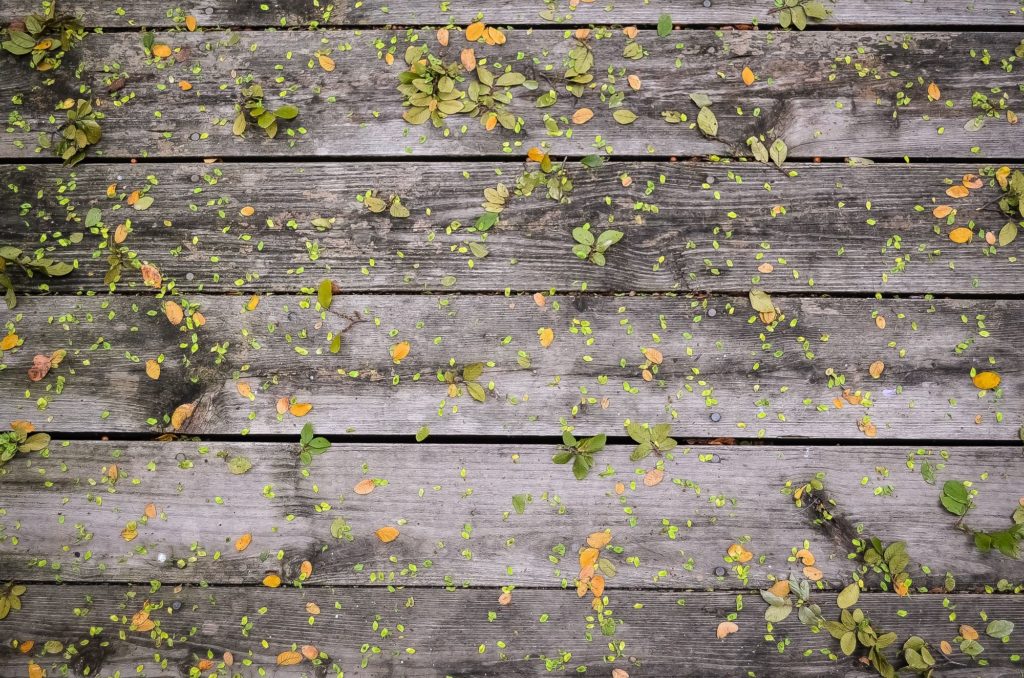 Your backyard is aching for some sitting space, so why not build your own deck? A backyard deck is an extremely manageable home project for DIYers of any skill level. In this article, learn eight essential deck building tips that make a DIY backyard deck like the pros.
Your backyard is aching for some sitting space, so why not build your own deck? A backyard deck is an extremely manageable home project for DIYers of any skill level. In this article, learn eight essential deck building tips that make a DIY backyard deck like the pros.
8 Essential Tips for Deck Building
Building your own deck is a great DIY project, but there are still some basic principles of carpentry and construction essentials that need to be followed if you don’t want your deck to collapse. And, before you can choose your new patio cushions, some extra know-how is also needed if you are building your deck on a hillside, over water, or near a flood zone.
1. Know the Needs for Your Location
Most deck building is atop ground that is not naturally level. Construction is more difficult for those that live on a mountain, steep hill, or other extreme topography. If your backyard is on a slight slope the deck building process is the same as if the ground were completely flat.
As long as the ground of your yard is weight barring, you can build the perfect backyard deck, no matter the topography. These eight tips will guide you through the deck building process to a professional-grade finished product:
2. Wood Decking Materials
The first, and most informative decision you make, regarding your backyard deck project, is the material with which you build. In general, you must use material that is weather-resistant, insect-proof, and weight bearing.
There are several types of variably priced decking material. Each type offers benefits and drawbacks.
Treated Lumber
The classics never die-and treated lumber is as classic as deck building material gets. You can find treated lumber at any local hardware store, and it is the most cost-effective material to use. Treated lumber is soaked in chemical to make it weather-resistant and insect-resistant.
If you use untreated lumber your deck will rot away within the first season. You will need some lumber, regardless of your decking material choice, so be sure it is treated.
Lumber planks are versatile and easy to work with. You can cut them, stain them, sand them, and more. They are as basic as decking material gets.
Treated lumber will take some extra effort to give it a professional look. And, without regular cleaning and maintenance, it will warp and crack, eventually. But, with a little extra work, you will save hundreds of dollars on labor and pricy materials.
Cedar and Redwood Lumber
Cedar and redwood are both natural insect repellent. This makes them good for decking. However, you need to apply your own weatherproofing and finish to these woods.
Hardwood
A tropical hardwood, oak, walnut, and other hardwoods are naturally resistant to insects, as well, as to rot. Hardwood lasts longer than your lifetime, but not without a cost.
Hardwood is more difficult to work with and more expensive. Blades dull quickly and be prepared to break some drill-bits. That being said-hardwood is the most high-quality deck material.
3. Synthetic Decking Materials
Composite Board
Composite board decking is the newest innovation in deck building. Composite is very low maintenance, installation-friendly, and long-lasting, however, it carries a higher price, around $4 per square foot to around $8.
The composite contains around 75 percent wood fiber and 25% polypropylene plastic. Wood off-fall from industrial manufacturing facilities and recycled plastic, from bottles and bags, is shredded thin and mixed together with color pigmentation. Unlike lumber, composite decking is semi-hollow which makes it much lighter-but you can still nail, screw and glue them.
Ultraviolet inhibitors in the composite board keep sunlight from fading the pigmentation, while borate preservatives are added to keep bugs, like termites, from burrowing in.
The final step of the manufacturing process, before the composite board cools and sets, is to emboss a faux-wood grain. Composite boards come in a wide variety of colors, grain styles, and textures, so you don’t have to stain them. And, they never crack or corrode, so they last longer than treated lumber.
PVC
PVC is moderately priced, easy to work with, and easy to clean. It is not known to rot and bugs have no interest in eating through the boards. PVC decking is the same material as the pipes. It differs by simply molding into the shape of a board during manufacturing.
PVC lasts for years but will become vulnerable to cracking after a five to ten cold winters. Out of all the types of decking material, PVC looks the least like natural wood, and, unlike composite, it does not have any faux-wood texture or pigmentation.
4. Check the Need for Permits
The most annoying mistake to make is to build a backyard deck when there are zoning laws forbidding it. Often, local building codes will only apply if the deck is on a shared or commercial residence, or if it is really big. Check your local building code regulations to find out if you need a permit for deck building.
5. Design and Planning – Measure Twice, Cut Once
Decide where your deck will be. A deck built against the side of your home will differ from one that extends an existing deck. A two-story deck needs additional support to a freestanding deck-etc.
Before you purchase materials or make a single cut, plan out how many pieces of material you will need, and what cuts will be required. Make a cut-list before purchasing your decking material.
Be prepared, if your deck must circumvent a tree, upright beam, or other pre-existing structure. Use an online deck designer tool to make sure your plan is structurally sound. A good plan makes for quick, surprise-free work.
6. Create a Strong Foundation
Install the footings for your deck supports below the frost line of the ground in your backyard. The depth of the frost line, as well, as the depth your concrete footings must be, depends on your land and location.
Standard deck building is to the load of 60 pounds per square foot, including the deck.
7. Space Decking Boards with a Jig
Space your deck’s boards about an eighth of an inch apart, as to allow drainage. Make spacers out of off-fall material, or purchase ready-made decking spacers. You can even get a jig that allows you to space the board while you fasten it through the side.
8. Deck Staining and Finishing
When doing any home project, the stain should be applied slowly and patiently. Wood stain is not applied with a brush-but with a rag. Ask your local hardware store for its recommendation on the best staining and finishing material.
The most essential tip for your backyard deck is to keep it clean and well maintained. Read more articles on our blog about how to take care of your deck and outdoor furniture.
Final Thoughts
Consider covering it up in the winter time. Space the boards wider if you notice pooling water on the deck. And, repel gophers, groundhogs, and moles from compromising the integrity of your concrete footings by planting marigolds all around your backyard.
If these deck building tips were helpful, share this article with your family and friends on social media. And, view here to check the blog for more tips and tricks on home improvement projects. Thanks for reading!

